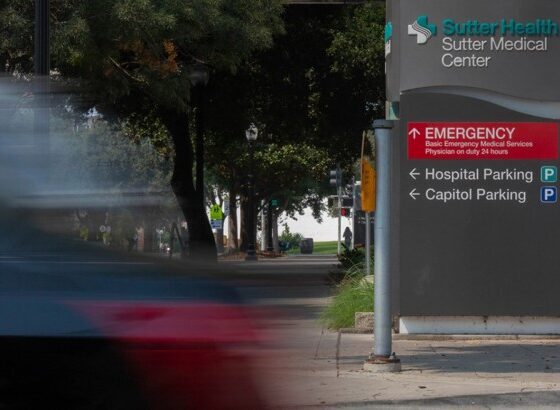President Obama and his advisers hope the healthcare overhaul will do two things. The first is to extend coverage to tens of millions of Americans who today lack health insurance. The second is to hold the line on rising health care costs. This article describes some hurdles to achieving those two goals. While you are enjoying a vacation this summer, hopefully you will have time to ponder the impacts Health Care Reform will have on you and your family.
By Eduardo Porter, NY Times
Like other big employers, in the mid-1990s Harvard University was struggling with the ballooning cost of providing health insurance.
It chose what was a novel solution for the time. It dropped its standard deal — a subsidy that rose in line with the price of the insurance policy — and switched some 10,000 workers on its payroll to a fixed subsidy that encouraged them to shop around for care.
For Harvard’s accountants, the change worked wonders. A study a couple of years later by David M. Cutler, a Harvard economist, and Sarah Reber, a Harvard graduate, concluded that competition among insurers cut the university’s health bill by 5 to 8 percent.
But not everybody was equally pleased. Families of workers who chose the Preferred Provider Organization offered by Blue Cross/Blue Shield — the most comprehensive plan, with lots of doctors and hospitals on its network — faced a $500-a-year jump in their out-of-pocket spending on health care.
Younger and healthier workers canceled their P.P.O. plans, enrolling in cheaper H.M.O. options or dropping Harvard insurance altogether. Left with a sicker patient base, the P.P.O. raised its premiums further, which prompted the next layer of relatively healthy customers to leave.
And so on. In 1997, Blue Cross/Blue Shield withdrew its P.P.O. from the market, making it a victim of what economists call the death spiral of adverse selection.
In a couple of months the nation is set to experience a similar shock on a very large scale: the greatest change in how Americans pay for health care since the advent of Medicare nearly half a century ago.
Come October, millions of uninsured people will be able to choose one of several health plans, offered at four different tiers of service and cost through new health exchanges coming onstream in every state.
Cheap “bronze” plans will shoulder some 60 percent of patients’ medical expenses. Pricey “platinum” plans will cover at least 90 percent. But insurers will not be allowed to exclude people with pre-existing conditions, or charge more for the sick, or put a lifetime cap on medical costs. Their policies will have to cover a minimum standard of medical care. And the government will subsidize those who cannot afford to buy the policies.
President Obama and his advisers hope the overhaul will do two things. The first is to extend coverage to tens of millions of Americans who today lack health insurance. The second is to hold the line on rising health care costs.
“Over time, success will depend on what happens to the cost curve,” Professor Cutler told me. “If we don’t bend the cost curve, everything will fail. The government won’t be able to afford it. Nobody will be able to afford it.”
In theory, the overhaul could meet both goals. Millions of new Americans armed with a subsidy and shopping among plans would bring consumer choice to bear, finally, on the health care industry. Insurers would compete to create policies that offered the most value for money, pressuring hospitals and doctors on behalf of all of us.
Yet despite the care the administration took in establishing incentives and safeguards, even some of Obamacare’s most committed backers are wondering whether the experiment will work as advertised — or, like Harvard’s P.P.O., go off the rails along the way.
Adverse selection is perhaps the direst threat. For Obamacare to work, millions of healthy, young, uninsured Americans must join a health plan to counterbalance the sicker millions who are most likely to buy insurance. Otherwise, health plans on the exchanges will have to raise premiums to shoulder the higher costs.
Selection will also take other forms. Healthier Americans will probably flock to cheaper bronze plans. And insurers will vie to enroll the healthy. In some states, big insurers have chosen not to participate in exchanges to avoid their strictures. On the outside, they could still sell cheap plans to skim off the healthy and avoid a rule that insurers on the exchanges must also offer more generous silver and gold plans.
Adverse selection is not the only risk.
A few studies have found that more competition among health insurers leads to lower hospital fees on average and that premiums rise when insurer competition diminishes. But researchers have also found that top hospitals — which any decent plan must have on its network — increase their fees when more health plans compete for their business.
Some economists have voiced fears that insurers with small market shares will not have the clout to bargain effectively with enormous hospital systems, which are being encouraged to consolidate even further into Accountable Care Organizations that take charge of patients’ entire health needs.
“The more health plans compete for insured in a local health market, the more fragmented the payment side of the market will be vis-à-vis the ever more consolidated supply side,” Uwe Reinhardt of Princeton, a contributor to The Times’s Economix blog, wrote me in an e-mail. “And the higher prices for health care will be.”
This month, Washington State announced that it had rejected the applications of five health plans on the grounds that they did not have enough hospital capacity in their networks. John Holahan of the Urban Institute suggests that more states should worry about that possibility.
“We were told that insurers would develop narrow networks excluding high-cost providers, and squeeze providers to give lower rates,” Mr. Holahan told me. “But smaller insurers will probably not get a good network at good prices.”
Republicans — unyielding critics of Obamacare — have been gleefully issuing forecasts of doom. A report in May by Republicans on the House Committee on Energy and Commerce forecast disaster all around.
Disaster is unlikely. There are provisions in the Affordable Care Act to mitigate adverse selection, including the subsidy and a small fine for those who refuse to buy insurance. Risk adjustment mechanisms to compensate health plans that enroll a sicker pool of patients should prevent death spirals and reduce insurers’ incentive to skim off the healthy.
States have been disclosing plans approved for their exchanges. It appears there will be enough to offer real choice. In Massachusetts the number of insurers has increased fourfold since it introduced a health insurance exchange in 2006. Over the period, the market share of Blue Cross Blue Shield of Massachusetts fell to 40 percent of individual enrollment, from 80 percent.
And while premiums will increase for some people, there is little reason to expect they will soar across the board.
Still, avoiding disaster does not amount to success. Recent studies have come to radically different conclusions on the impact of risk adjustment on adverse selection and health care costs. Hospital oligopolies could undo it all.
Jonathan Gruber from the Massachusetts Institute of Technology, who advised the administration on the design of Obamacare, argues that the health overhaul strikes the right balance between competition and regulation. Sure, there will be some adverse selection. It is nonetheless an improvement over a health care industry that gets around the problem by not insuring the sick.
That may not be enough, though. Consider Harvard’s experience. It eventually fixed its death spiral by requiring that every insurer offer an option with broad access to health providers alongside its typical H.M.O. It added risk adjustment. This prevented further health plan failures, but it did not shield Harvard from inexorably rising health costs. Those are something Obamacare — and the nation — cannot afford.
For Obamacare, Some Hurdles Still Ahead
You might also like


